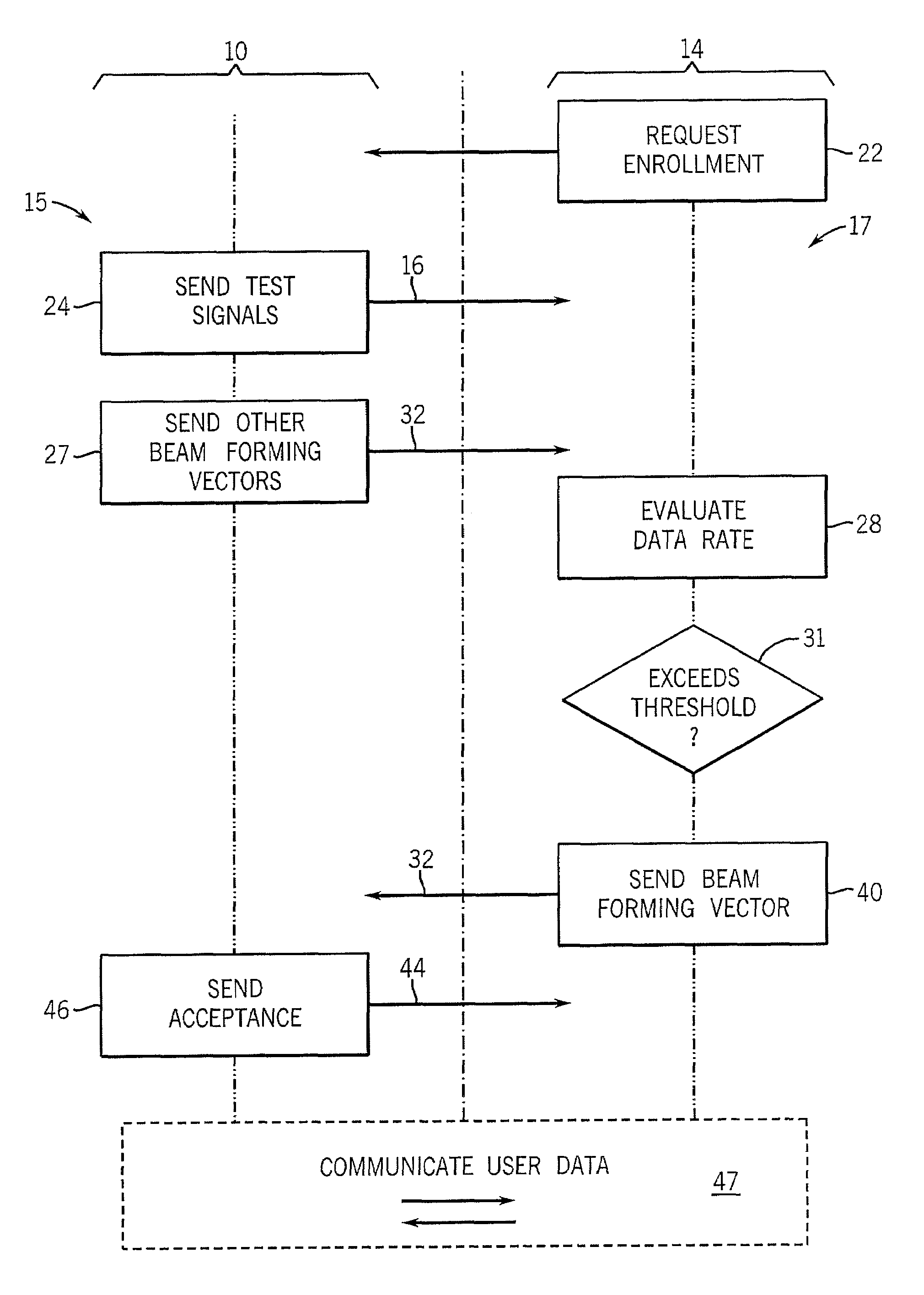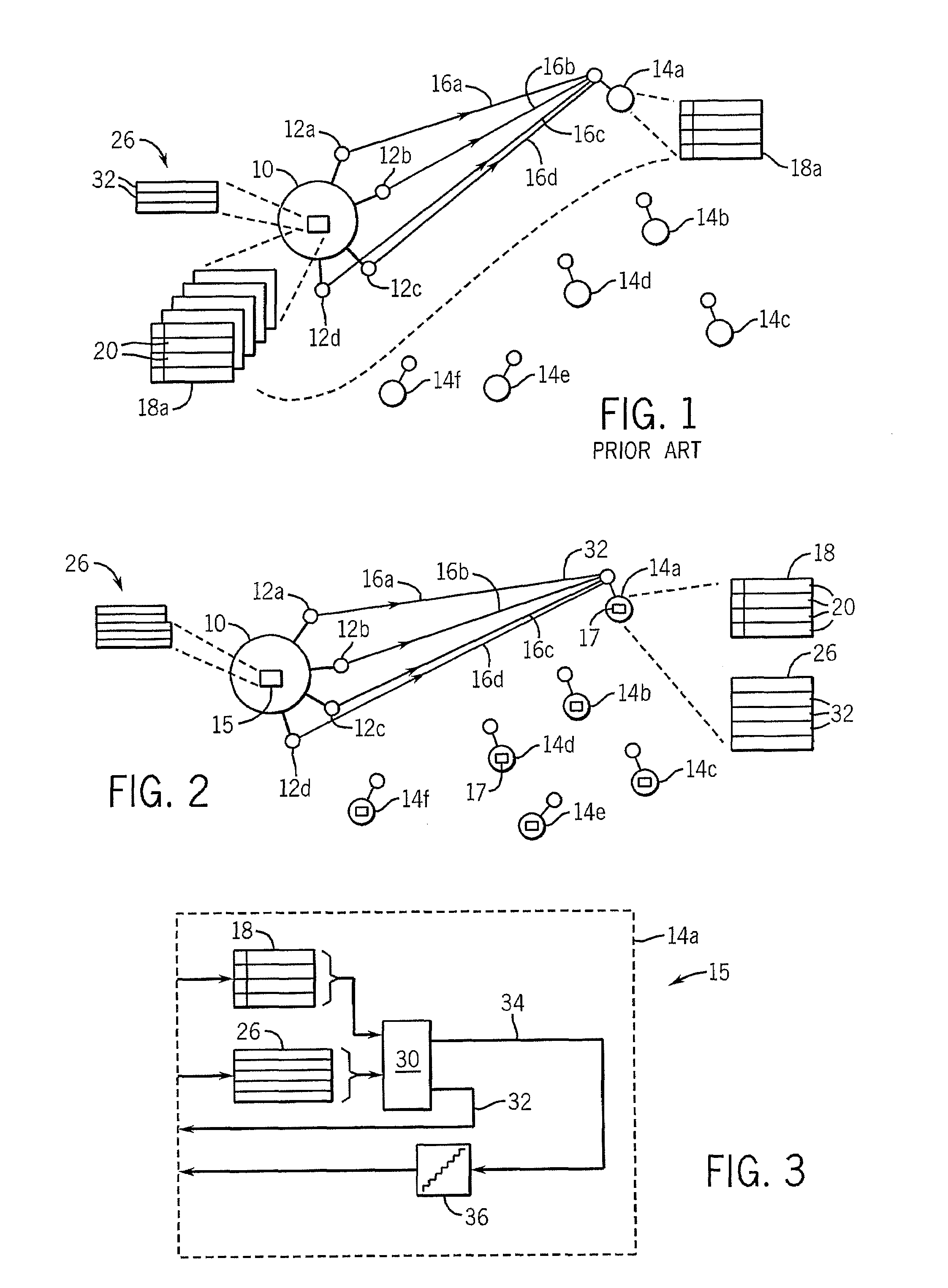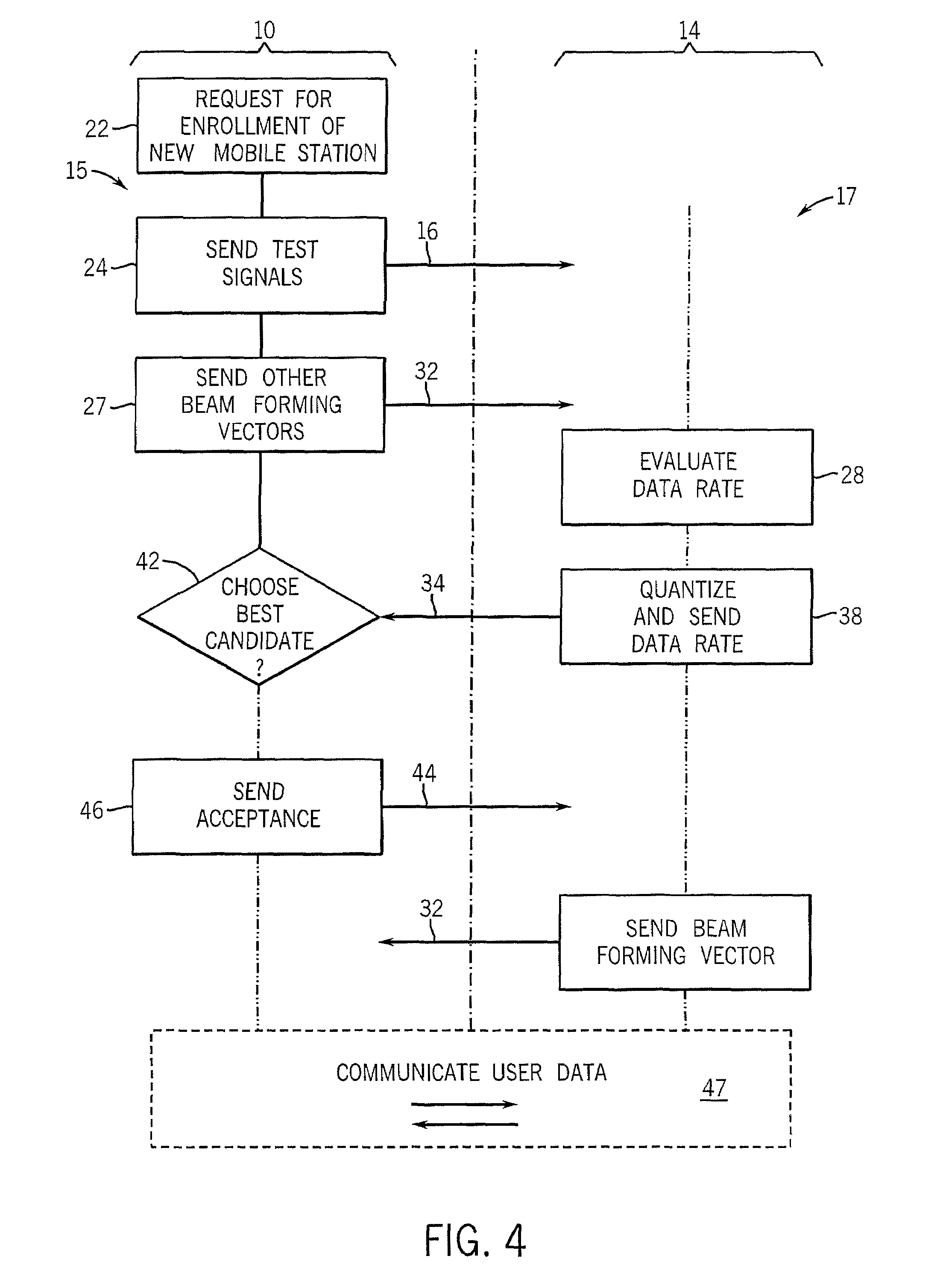Distributed scheduling method for multi-antenna wireless system
a wireless system and distributed scheduling technology, applied in the field of wireless communication systems, can solve the problems of reducing the scalability of the optimization process, and overwhelming the benefits so as to improve the scalability of the optimization process, and reduce the data overhead of the optimization process.
- Summary
- Abstract
- Description
- Claims
- Application Information
AI Technical Summary
Benefits of technology
Problems solved by technology
Method used
Image
Examples
Embodiment Construction
[0041]Referring now to FIG. 2, the present invention may employ a base station 10, for example, being a radio transceiver being part of a cellular telephone system or wireless local area system. The base station 10 may have multiple antennas 12a-12c that may communicate with a pool of mobile stations 14a-14f, being radio transceivers compatible with the base station 10.
[0042]Each of the base station 10 and mobile stations 14 may employ radio-frequency communication hardware, for example, suitable for time division multiplexing, frequency division multiplexing, and frequency hopping according to techniques well known in the art. The base station 10 incorporates a program 15 and the mobile stations 14a-14f incorporate programs 17 controlling their operation per the present invention as will now be described.
[0043]Referring now to FIGS. 2 and 4, at any given time, the base station 10 may receive data from a network intended for a new mobile station 14a, per process block 22, and effect...
PUM
 Login to View More
Login to View More Abstract
Description
Claims
Application Information
 Login to View More
Login to View More - R&D
- Intellectual Property
- Life Sciences
- Materials
- Tech Scout
- Unparalleled Data Quality
- Higher Quality Content
- 60% Fewer Hallucinations
Browse by: Latest US Patents, China's latest patents, Technical Efficacy Thesaurus, Application Domain, Technology Topic, Popular Technical Reports.
© 2025 PatSnap. All rights reserved.Legal|Privacy policy|Modern Slavery Act Transparency Statement|Sitemap|About US| Contact US: help@patsnap.com



